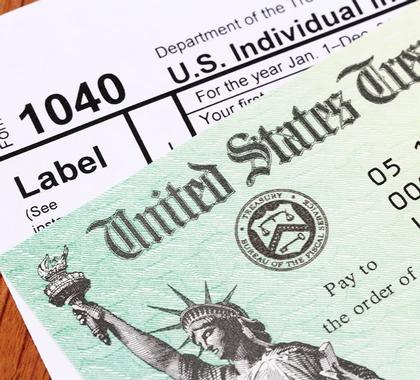The U.S. Treasury has moved to stymie efforts by high-tax states to circumvent the cap on the deductibility of state and local taxes (SALT) on federal tax returns, established in the 2017 Tax Cuts and Jobs Act.
In the first of what promises to be several moves to block states from trying to get around the $10,000 limit on SALT deductions for individual tax returns, Treasury issued the new regulation on June 13.
The rule closed a loophole used by four high-tax states: Connecticut, New Jersey, New York, and Oregon. These states allowed their residents to “pay” some of their state and local taxes by donating to a state or local charitable trust and receiving a tax credit for the contributions.
Because federal tax law does not cap these charitable deductions, high-tax states found this a convenient way to shield their residents from the SALT cap without having to lower taxes themselves.
Charitable ‘State Tax Benefits’
The new rules and guidance “prevent charitable contributions made in exchange for state tax credits from circumventing new limitations on state and local tax deductions,” a June 11 Treasury press release stated.
“The regulation is based on a longstanding principle of tax law,” Treasury stated. “When a taxpayer receives a valuable benefit in return for a donation to charity, the taxpayer can deduct only the net value of the donation as a charitable contribution. The rule applies that principle, known as the quid pro quo [“what for what”] principle, to state tax benefits provided to a donor in return for contributions.”
Treasury’s Safe Harbor
Treasury and the IRS also issued a notice providing a “safe harbor” that, subject to certain limitations, including the SALT cap, allows individual taxpayers who itemize deductions to treat payments made in exchange for tax credits as payments of state and local taxes for federal income tax purposes.
Eligible taxpayers can use the safe harbor to determine their SALT deductions for their 2018 return and can file an amended return if they have already filed, Treasury stated.
Treasury said it was reviewing other regulatory steps to deal with efforts by states to circumvent the SALT cap. Commonly referred to as workarounds, these, too, will presumably be quashed by forthcoming Treasury regulations.
Leaving High-Tax States
The SALT cap is temporary and is scheduled to expire in 2025. High-tax states are already losing population to low-tax states, and the out-migration may escalate as residents of the former feel the bite of the SALT cap year after year.
The resulting decrease in the tax base could put further strains on high-tax states’ revenues and budgets. By the time the SALT cap expires, high-tax states could find themselves in an even more precarious fiscal situation than they are in now.
States most affected by the SALT cap could cut their taxes, but that option doesn’t appear to be under serious consideration.
Taxes ‘Driving People Out’
High-tax states trying to circumvent the SALT cap are struggling with a problem they brought upon themselves, says Chris Edwards, director of tax policy studies at the Cato Institute.
“It’s clear that high taxes are driving people out of high-tax states such as New York,” Edwards said. “IRS data for 2016 show that of the 25 states with the highest taxes, 24 of them had net out-migration.”
High-tax states are losing population to their low-tax counterparts, Edwards says.
“State and local taxes are 14.7 percent of personal income in the largest outflow state, New York, but they are just 7.5 percent in the largest inflow state, Florida,” Edwards said.
Distinction with a Difference
The Treasury regulation rightly distinguishes between the sham donation programs and true charitable tax breaks, says Adam Michel, a senior policy analyst for fiscal policy at the Heritage Foundation’s Institute for Economic Freedom.
“The most important part of the Treasury Department’s final regulations was the protection of legitimate state-based tax credit scholarship programs for school choice,” Michel said.
“Under the proposed rule, the deductibility of state scholarship programs was limited to the 10 percent of taxpayers who itemize but don’t max out their deductions for state and local taxes,” Michel said. “In some cases, the cost of donating would have increased from zero to as much as 37 percent of the donation amount. [In the final rule] Treasury fixed the problem and reestablished the federal tax system’s neutrality toward state tax credit programs,” Michel said.
Could Open New Questions
“Donors to scholarship programs will still be able to take the deduction for state and local taxes up to the $10,000 cap, meaning there is no new tax cost for taxpayers who donate to a state credit scholarship program,” Michel said.
“The Treasury notice fixes the tax problems of the original proposal but could open the door to the question of whether contributions to tax credit organizations are donations or redirected government money,” Michel said.
In 2010, the U.S. Supreme Court ruled tax dollars foregone by a state as a result of a tax credit program are not state funds, says Michel.
“The precedent established in Arizona v. Winn makes clear that these are still donations,” Michel said. “The tax was never collected by the state, so it remains a donation that is distinct from a voucher program.”
Bonner R. Cohen, Ph.D. ([email protected]) is a senior fellow at the National Center for Public Policy Research.





